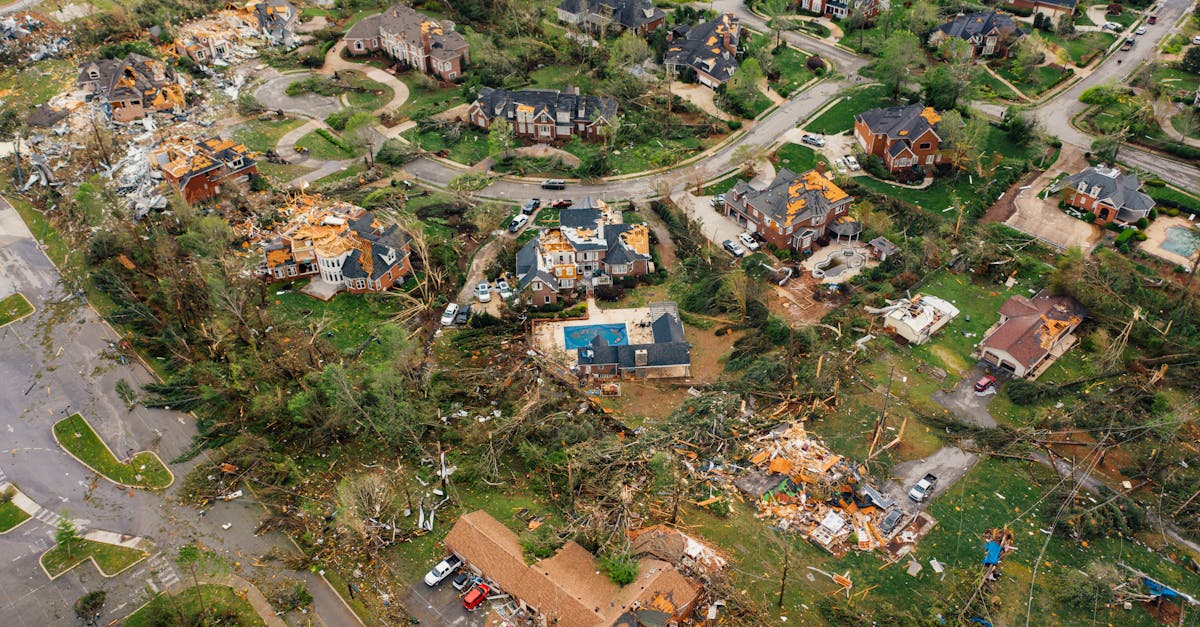
Introduction
In May 2025, the Central United States experienced a tornado outbreak of unprecedented severity, leaving widespread destruction in its wake. This fierce bout of nature wreaked havoc across several states, challenging emergency services and testing the resilience of communities. As tornadoes swept through towns, lives were lost, homes were demolished, and landscapes were transformed in an instant. Scientists and meteorologists were taken by surprise due to the outbreak's magnitude and intensity. The aftermath left millions grappling with a changed reality, sparking significant discussions on climate impact and disaster preparedness. This article provides a thorough examination of the tornado outbreak's impact on the region.
Understanding the Severity
The tornado outbreak in May 2025 was among the most devastating natural events of recent years, catching even seasoned weather experts off guard. With over fifty tornadoes touching down across a dozen states, the impact was extensive. These tornadoes varied in size, from smaller EF1s to catastrophic EF5s, ripping through communities with ferocious intensity. Meteorological assessments showed anomalously warm temperatures and moisture-laden air masses contributed to the storm system's formation. Experts have noted similar patterns pointing towards increased unpredictability in severe weather events, signaling the broader changing climate trends that the planet faces.
Economic Consequences
The economic toll of the May 2025 tornadoes was nothing short of staggering, with estimates suggesting billions in damages. Entire neighborhoods were reduced to rubble, displacing thousands of residents and causing businesses to shutter. The destruction of key infrastructure, such as roads and power lines, disrupted communities and industries alike, stunting economic growth for months. Insurance companies faced a deluge of claims, straining resources and leading to post-disaster policy reevaluations. State and federal assistance was deployed on an unprecedented scale to aid recovery, yet the full rebuilding process will likely span several years.
Humanitarian Impact
Beyond the financial ramifications, the humanitarian impact of the tornado outbreaks was profound. Entire families were left homeless, and the death toll further exacerbated the region's grief. Emergency shelters, already under pressure from ongoing economic hardships, were overwhelmed by the sudden influx of displaced individuals. Medical facilities faced staffing shortages and logistical challenges as they attended to the injured. Communities banded together, with neighbors rallying to support one another, highlighting human resilience amid tragedy. Mental health services, recognizing the long-term psychological effects of such trauma, ramped up their offerings to help affected families cope.
Impact on Agriculture
Agriculture, the backbone of many Central US economies, bore the brunt of the tornado outbreak. Fields of ripe crops were flattened, obliterating thousands of acres of essential food resources and causing prices to surge. The destruction extended to livestock farms, where thousands of animals were lost or stranded, leading to further economic impacts. The sudden drop in production impacted local and national food supplies, heightening concerns over food security. As farmers assess the landscape, strategies are being developed to implement more resilient agricultural practices to mitigate future risks and ensure sustainability.
Infrastructure Challenges
Infrastructure across the tornado-ravaged areas sustained extensive damage. Major highways and local roads were rendered impassable due to debris, complicating emergency response and recovery efforts. Power outages plagued affected areas, with some regions remaining without electricity for days or weeks. Telecommunications were also disrupted, leaving gaps in emergency communication and hampering coordination. Rapid assessment and repair teams have been deployed, focusing on restoring critical services and implementing infrastructure improvements to withstand future natural disasters more effectively.
Environmental Implications
The tornado outbreak profoundly impacted the environment, with entire ecosystems disrupted by the high-velocity winds. Forests were stripped of trees, leaving wildlife habitats decimated. Soil erosion became a prominent issue, compounding agricultural challenges by reducing land arability. Continued analysis and research will be vital to understanding the long-term environmental consequences. In response, local governments are considering implementing more sustainable landscaping practices and bolstering natural defenses, such as planting more wind-resilient tree species to aid habitat restoration and protect soil.
Community Resilience and Recovery
The process of recovery in the tornado-struck regions has been marked by remarkable displays of community resilience. Faced with monumental losses, survivors have leaned on each other for support, sparking initiatives to rebuild not only homes but community spirit. Grassroots movements are on the rise, dedicated to creating more tornado-resistant housing initiatives. Non-profit organizations have stepped in, providing essential services and partnering with private sectors to accelerate reconstruction efforts. This collective approach underscores a shared determination to rebuild stronger and more resilient communities.
Lessons and Future Preparedness
This unprecedented tornado outbreak has highlighted key lessons in disaster preparedness and resilience. Emergency management agencies are revisiting their protocols and training programs, tailoring them to handle more frequent and severe weather. Public awareness campaigns are underway, stressing the importance of readiness and response. Local governments are being urged to invest in better forecasting technologies, more resilient infrastructure, and community-based education programs. Collaboration across state lines is seen as imperative for creating robust networks for future disaster response and recovery.
Summary and Conclusion
In summary, the tornado outbreak in May 2025 dramatically impacted the Central US, with significant consequences for individuals, economies, and environments. The sheer force of the tornadoes posed unprecedented challenges, yet also fostered resilience and innovation in recovery efforts. As communities rebuild, there is an urgent need to integrate lessons learned into future preparedness strategies. Looking ahead, the commitment to enhanced infrastructure and community resilience will be key to safeguarding against potential future threats. While the path to recovery is ongoing, this experience underscored the innate strength of the human spirit in overcoming the formidable forces of nature.